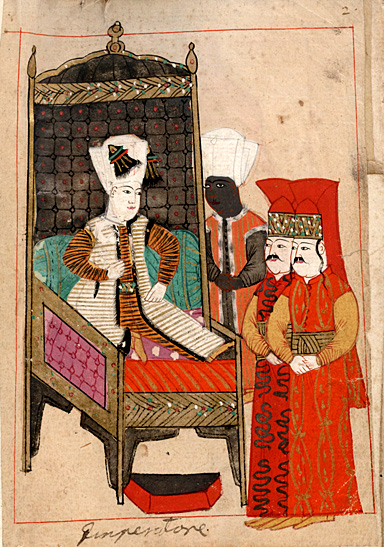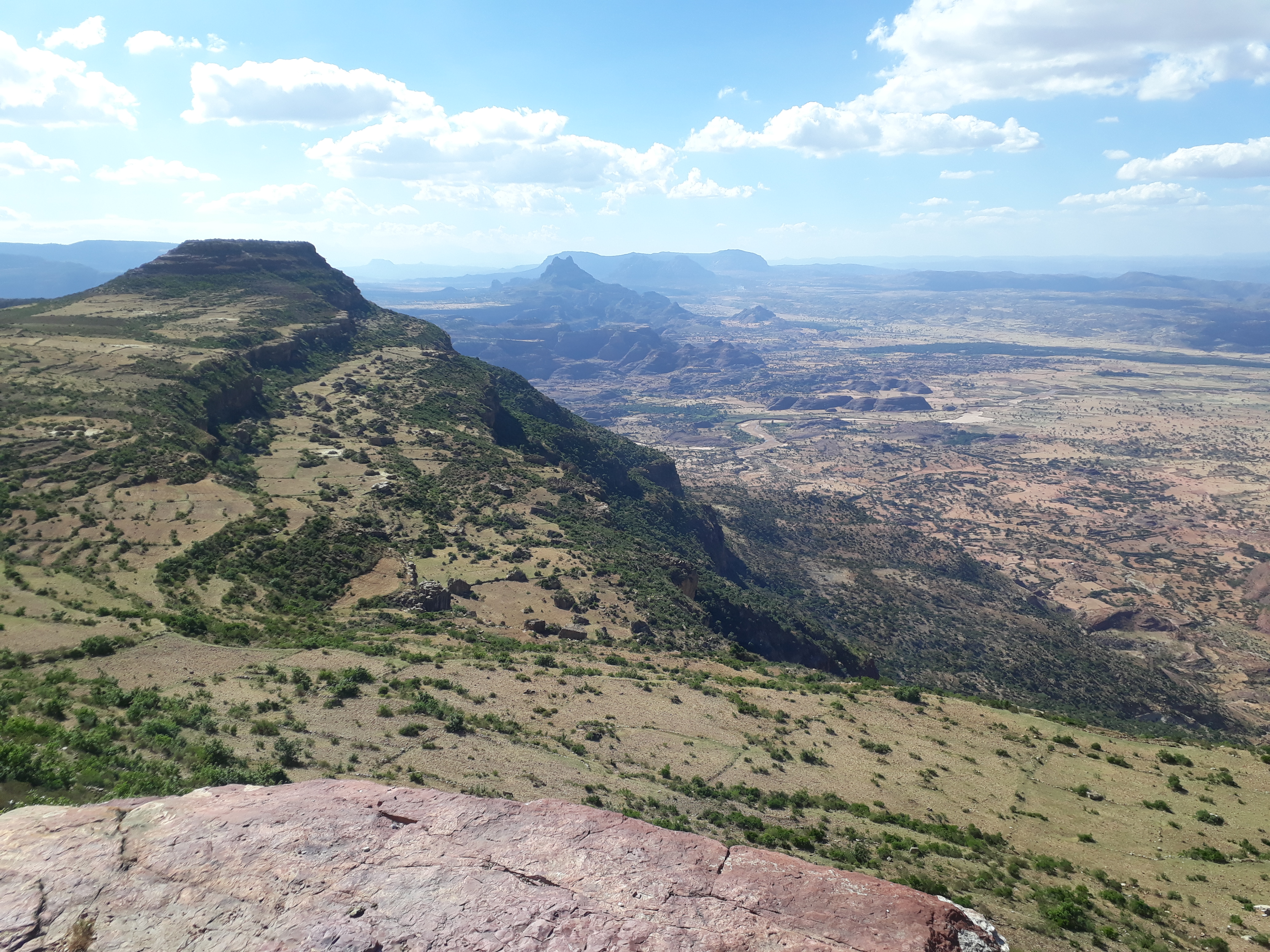|
Badlay Ibn Sa'ad Ad-Din
Badlay ibn Sa'ad ad-Din II ( ar, بادلاي بن سعد الدين) (also known as Sihab ad-Din Ahmad Badlay, Arwe Badlay – "Badlay the Beast" (died 1445) was a Sultan of the Sultanate of Adal and a son of Sa'ad ad-Din II. Brought numerous Christian lands under Muslim rule and contributed to expanding Adal's reach and power in the region. The polity under Sultan Badlay controlled the territory stretching from port city of Suakin in Sudan to covering the whole Afar plains to the Shewa and Chercher Mountains to include significant portions of Somaliland. Reign After succeeding his brother Jamal Ad-Din, Sultan Badlay moved the capital of Adal to Dakkar (a few miles southeast of Harar) upon his ascension; Richard Pankhurst states that he founded that town. In the next few years he continued his predecessor's policy of confrontation with the Christian Ethiopian Empire and he carried out several successful expeditions and succeeded in capturing the province of Bale. He bro ... [...More Info...] [...Related Items...] OR: [Wikipedia] [Google] [Baidu] |
Sultan
Sultan (; ar, سلطان ', ) is a position with several historical meanings. Originally, it was an Arabic abstract noun meaning "strength", "authority", "rulership", derived from the verbal noun ', meaning "authority" or "power". Later, it came to be used as the title of certain rulers who claimed almost full sovereignty (i.e., not having dependence on any higher ruler) without claiming the overall caliphate, or to refer to a powerful governor of a province within the caliphate. The adjectival form of the word is "sultanic", and the state and territories ruled by a sultan, as well as his office, are referred to as a sultanate ( '. The term is distinct from king ( '), despite both referring to a sovereign ruler. The use of "sultan" is restricted to Muslim countries, where the title carries religious significance, contrasting the more secular ''king'', which is used in both Muslim and non-Muslim countries. Brunei and Oman are the only independent countries which retain the ti ... [...More Info...] [...Related Items...] OR: [Wikipedia] [Google] [Baidu] |
Church House
A church, church building or church house is a building used for Christian worship services and other Christian religious activities. The earliest identified Christian church is a house church founded between 233 and 256. From the 11th through the 14th centuries, there was a wave of church construction in Western Europe. Sometimes, the word ''church'' is used by analogy for the buildings of other religions. ''Church'' is also used to describe the Christian religious community as a whole, or a body or an assembly of Christian believers around the world. In traditional Christian architecture, the plan view of a church often forms a Christian cross; the center aisle and seating representing the vertical beam with the bema and altar forming the horizontal. Towers or domes may inspire contemplation of the heavens. Modern churches have a variety of architectural styles and layouts. Some buildings designed for other purposes have been converted to churches, while many origina ... [...More Info...] [...Related Items...] OR: [Wikipedia] [Google] [Baidu] |
Sultans Of The Adal Sultanate
Sultan (; ar, سلطان ', ) is a position with several historical meanings. Originally, it was an Arabic abstract noun meaning "strength", "authority", "rulership", derived from the verbal noun ', meaning "authority" or "power". Later, it came to be used as the title of certain rulers who claimed almost full sovereignty (i.e., not having dependence on any higher ruler) without claiming the overall caliphate, or to refer to a powerful governor of a province within the caliphate. The adjectival form of the word is "sultanic", and the state and territories ruled by a sultan, as well as his office, are referred to as a sultanate ( '. The term is distinct from king ( '), despite both referring to a sovereign ruler. The use of "sultan" is restricted to Muslim countries, where the title carries religious significance, contrasting the more secular ''king'', which is used in both Muslim and non-Muslim countries. Brunei and Oman are the only independent countries which retain the tit ... [...More Info...] [...Related Items...] OR: [Wikipedia] [Google] [Baidu] |
Lawo Gabaya
Lawo is an international company based in Rastatt, Germany, specializing in the manufacture of digital mixing consoles and other professional audio equipment. It was founded in 1970 by Peter Lawo, and is currently run by his son Philipp. The company is notable for supplying the audio mixing equipment for the 2012 London Olympics and Nine Network, and for sports events in Asia, North America and Australia. The first developments of Peter Lawo were driven by the needs of composers of electronic music like Karlheinz Stockhausen. To Stockhausen's specifications Peter Lawo built an apparatus called "module 69 B" which was used to perform Stockhausen's composition ''Mantra''. The success of this production led to the founding of the Experimentalstudio of the Heinrich Strobel Foundation of the Südwestfunk in 1971.Wo ... [...More Info...] [...Related Items...] OR: [Wikipedia] [Google] [Baidu] |
Dessie
Dessiè City which is politically oppressed by the past Ethiopian government systems due to the fact that most of the population follow Islamic religion. Dessie ( am, ደሴ, Däse; also spelled Dese or Dessye) is a town in north-central Ethiopia. Located in the South Wollo Zone of the Amhara Region, it sits at a latitude and longitude of , with an elevation between 2,470 and 2,550 metres above sea level. Dessie is 400 km to the north of the capital Addis Ababa. It has a population of more than 200,000 people in over 30 wards. History Medieval history Prior to Dessie's foundation, the major settlement in this area was Wasal, mentioned in an early 16th-century Italian itinerary. Wasel is mentioned as a place that dismembered pieces of the Adal Sultanate's Badlay ibn Sa'ad ad-Din were sent after his defeat in battle. 19th century Dessie was founded by Emperor Yohannes IV who was camping in the highlands to the west of the Chefa Valley in 1882 on an expedition to forcef ... [...More Info...] [...Related Items...] OR: [Wikipedia] [Google] [Baidu] |
Francisco Álvares
Francisco Álvares ( – 1536-1541) was a Portuguese missionary and explorer. In 1515 he traveled to Ethiopia as part of the Portuguese embassy to emperor Lebna Dengel accompanied by returning Ethiopian ambassador Matheus. The embassy arrived only in 1520 to Ethiopia where he joined long sought Portuguese envoy Pêro da Covilhã. There he remained six years, returning to Lisbon in 1526-27 having written a report entitled ''Verdadeira Informação das Terras do Preste João das Indias'' ("A True Relation of the Lands of Prester John of the Indies"). 1515 embassy to Ethiopia Francisco Álvares was a chaplain-priest and almoner to King Manuel I of Portugal. He was sent in 1515 as part of the Portuguese embassy to the nəgusä nägäst (Emperor of Ethiopia), accompanied by the Ethiopian ambassador Matheus. Their first attempt to reach the port of Massawa failed due to the actions of Lopo Soares de Albergaria, governor of Portuguese India, which got no closer than the Dahlak ... [...More Info...] [...Related Items...] OR: [Wikipedia] [Google] [Baidu] |
Axum
Axum, or Aksum (pronounced: ), is a town in the Tigray Region of Ethiopia with a population of 66,900 residents (as of 2015). It is the site of the historic capital of the Aksumite Empire, a naval and trading power that ruled the whole region from about 400 BCE into the 10th century. In 1980, UNESCO added Axum's archaeological sites to its list of World Heritage Sites due to their historic value. Axum is located in the Central Zone of the Tigray Region, near the base of the Adwa mountains. It has an elevation of and is surrounded by La'ilay Maychew, a separately administered woreda of the Tigray region. History Axum was the hub of the marine trading power known as the Aksumite Empire, which predated the earliest mentions in Roman-era writings. Around 356 CE, its ruler was converted to an Abyssinian variety of Christianity by Frumentius. Later, under the reign of the Emperor Kaleb, Axum was a quasi-ally of Byzantium against the Sasanian Empire which had adopted Zoroastria ... [...More Info...] [...Related Items...] OR: [Wikipedia] [Google] [Baidu] |
Amba (geology)
An Amba ( am, ዐምባ ''āmbā'', ti, እምባ ''imbā'') is a characteristic landform in Ethiopia. It is a steep-sided, flat-topped mountain, often the site of villages, wells, and their surrounding farmland. Such settlements were frequently located on these amba plateaus because they were very defensible and often virtually inaccessible from the ground. The original term in Amharic indicates a mountain fortress. Amba Geshen, for example, is a historically significant amba where members of royal families were kept under guard for their safety and to prevent their participation in plots against the sitting emperor. Other noted Ambas include Amba Aradam and Amba Alagi, sites of famous battles during the first and second Italo-Ethiopian Wars. Notable Ambas in Ethiopian History *Amba Geshen - A Historic 'Prison' or 'Detention' location for royal family members. *Debre Damo - The name of both an Amba and historic Ethiopian Church. *Magdala - Emperor Tewodros's capitol before hi ... [...More Info...] [...Related Items...] OR: [Wikipedia] [Google] [Baidu] |
Battle Of Gomit
The Battle of Gomit was fought in 1445 between the Ethiopian Empire and a powerful Muslim army under the Adal Sultanate. The Ethiopians were led by Emperor Zara Yaqob, while the forces of Adal were led by Sultan Badlay ibn Sa'ad ad-Din. The Ethiopian army was victorious, and Badlay was slain. After dismembering the Adal sultan's body and plundering his treasures, the Emperor of Ethiopia decided not to conquer the Adalites, believing they were outside of the Christian boundary and shouldn't be included in his kingdom. However historian Hassan states Adal's powerful counter attacks persuaded Ethiopian monarch from attempting to occupy the state. Background Badlay first invaded the Ethiopian province of Dawaro in 1443, and again in 1445, but while in Dago, the Emperor Zara Yaqob received news that the Sultan Badlay ibn Sa'ad ad-Din had embarked on a war against him. He then marched south with the army of his vassal Hassab Bawassan. ''Garad'' Mohammed, the governor of Hadiya Sulta ... [...More Info...] [...Related Items...] OR: [Wikipedia] [Google] [Baidu] |
Zara Yaqob
Zara Yaqob ( Ge'ez: ዘርዐ ያዕቆብ; 1399 – 26 August 1468) was Emperor of Ethiopia, and a member of the Solomonic dynasty who ruled under the regnal name Kwestantinos I (Ge'ez: ቈስታንቲኖስ, "Constantine"). He is known for the ge'ez literature that flourished during his reign, the handling of both internal Christian affairs and external Muslim aggression, along with the founding of Debre Birhan as his capital. He reigned for 34 years and 2 months. The British historian, Edward Ullendorff, stated that Zara Yaqob "was unquestionably the greatest ruler Ethiopia had seen since Ezana, during the heyday of Aksumite power, and none of his successors on the throne – excepted only the emperors Menelik II and Haile Selassie – can be compared to him." Ancestry Born at Telq in the province of Fatajar, Zara Yaqob hailed from the Amhara people and was the youngest son of Emperor Dawit I by his wife, Igzi Kebra. His mother Igzi lost her first son and having been ... [...More Info...] [...Related Items...] OR: [Wikipedia] [Google] [Baidu] |




